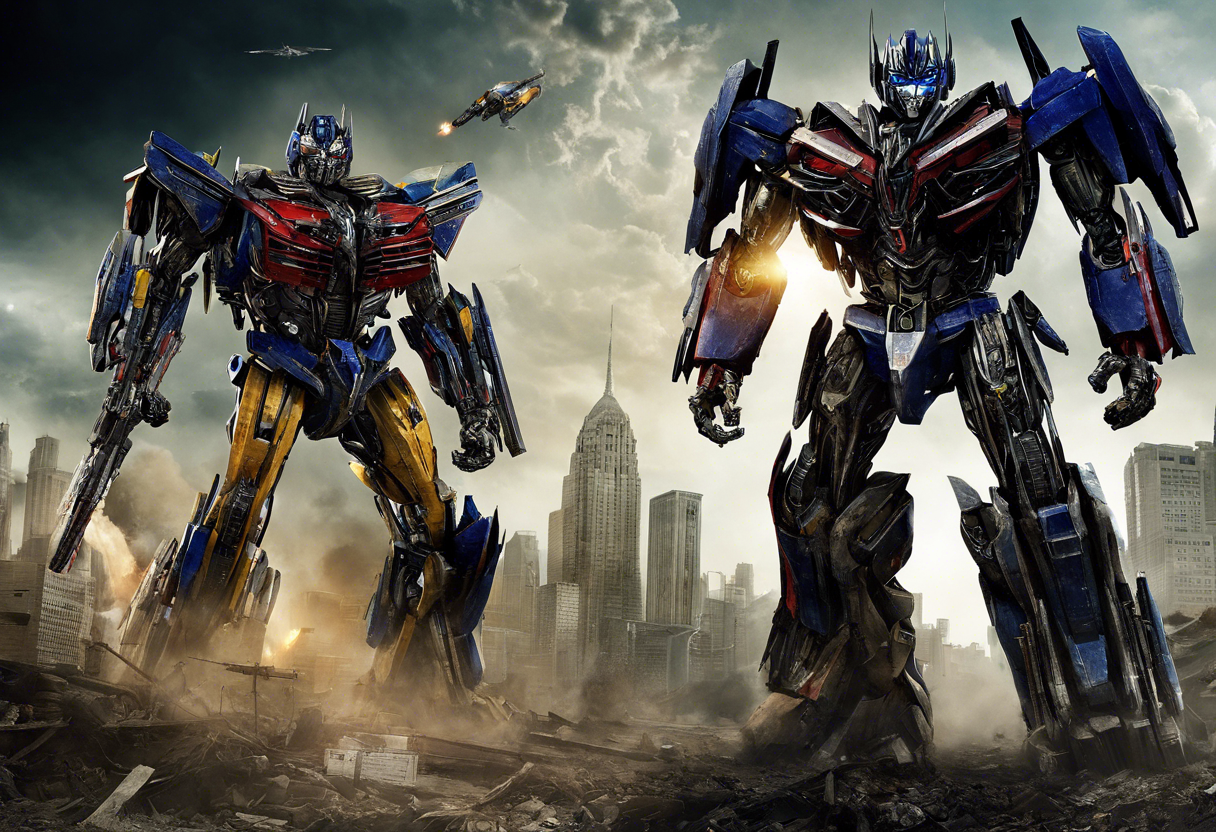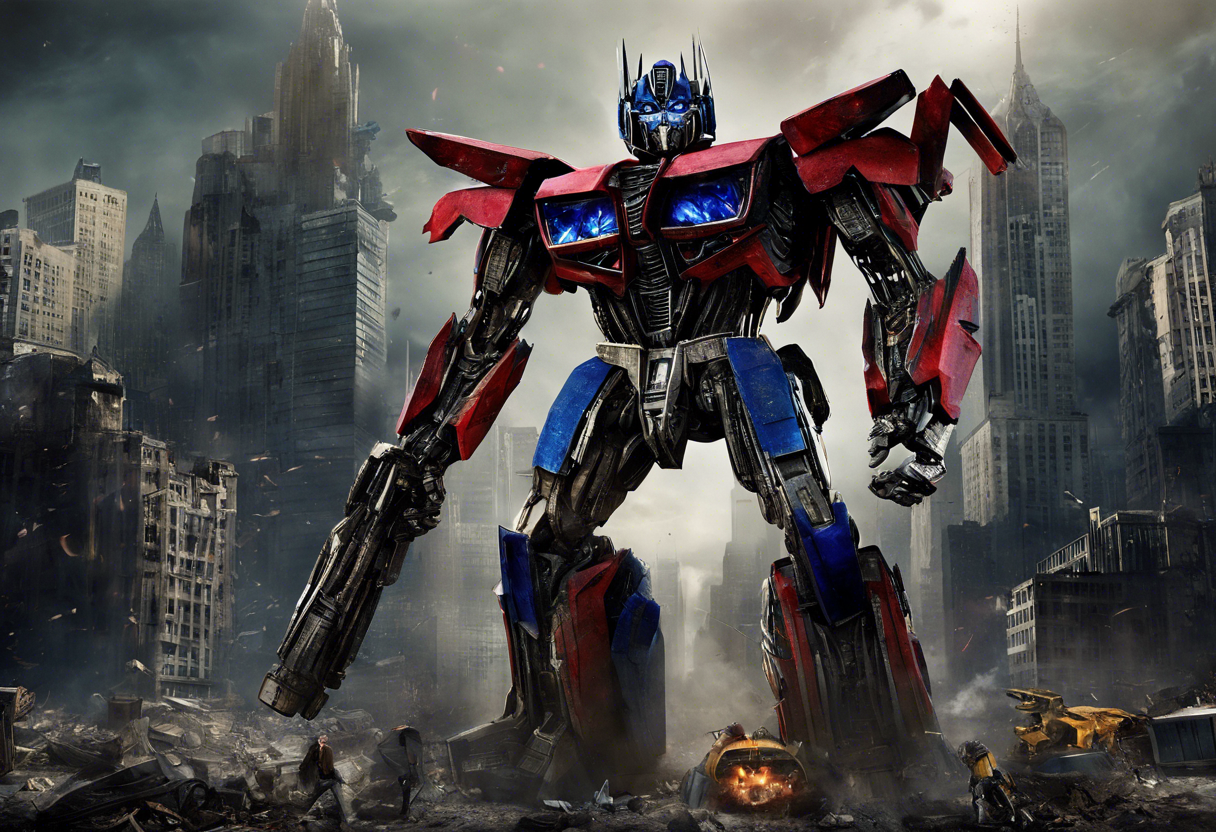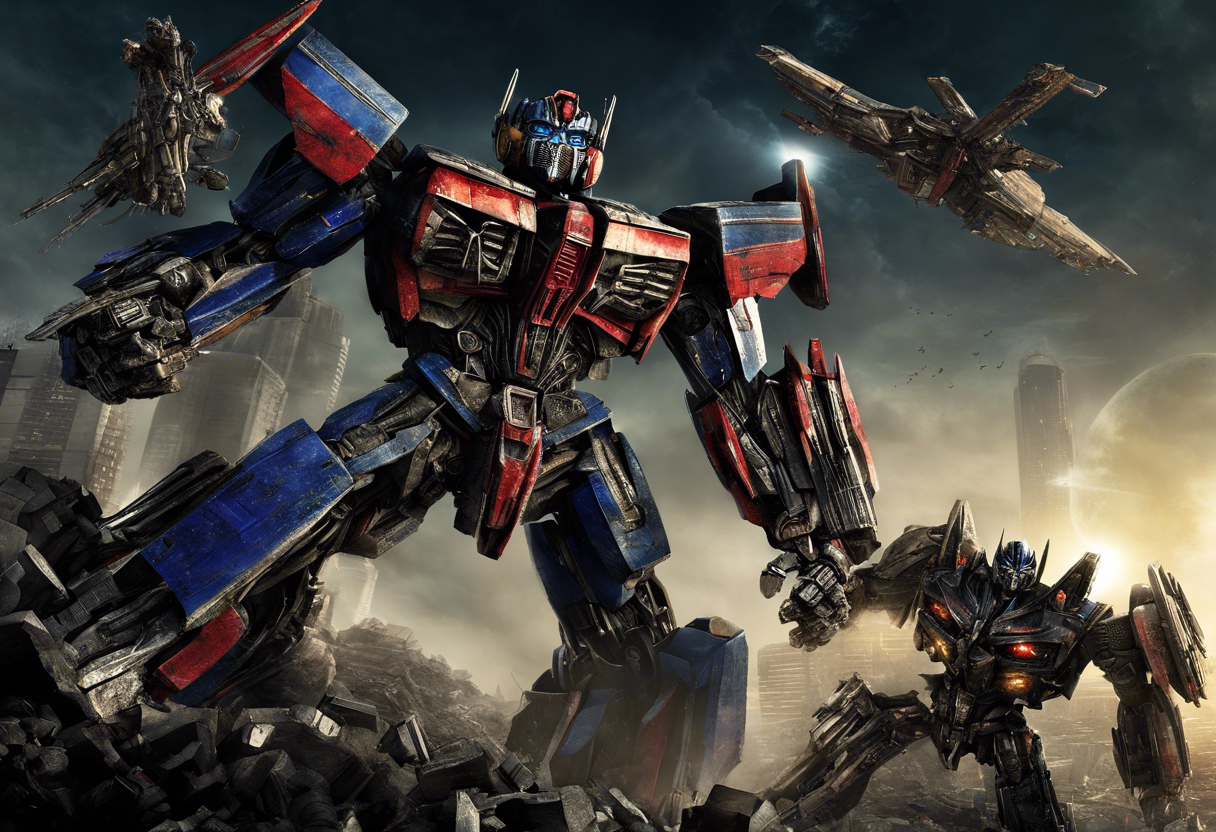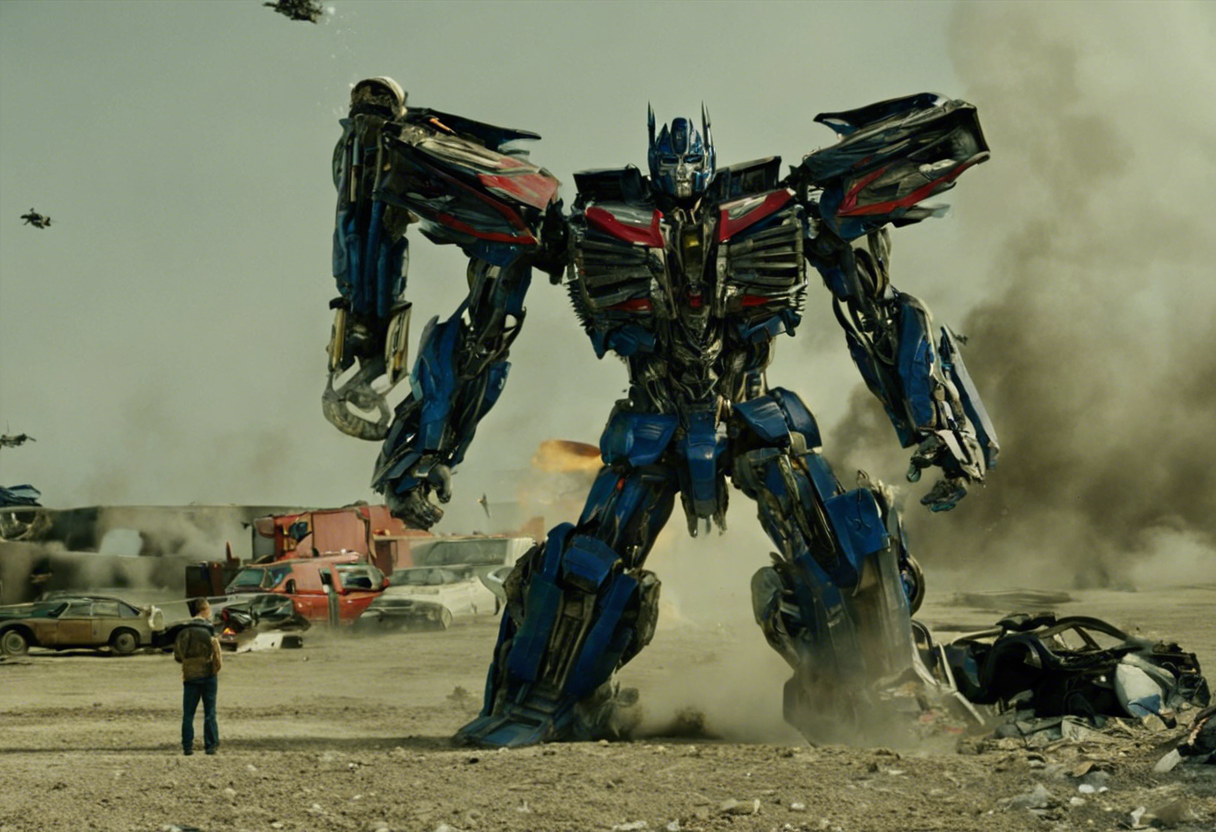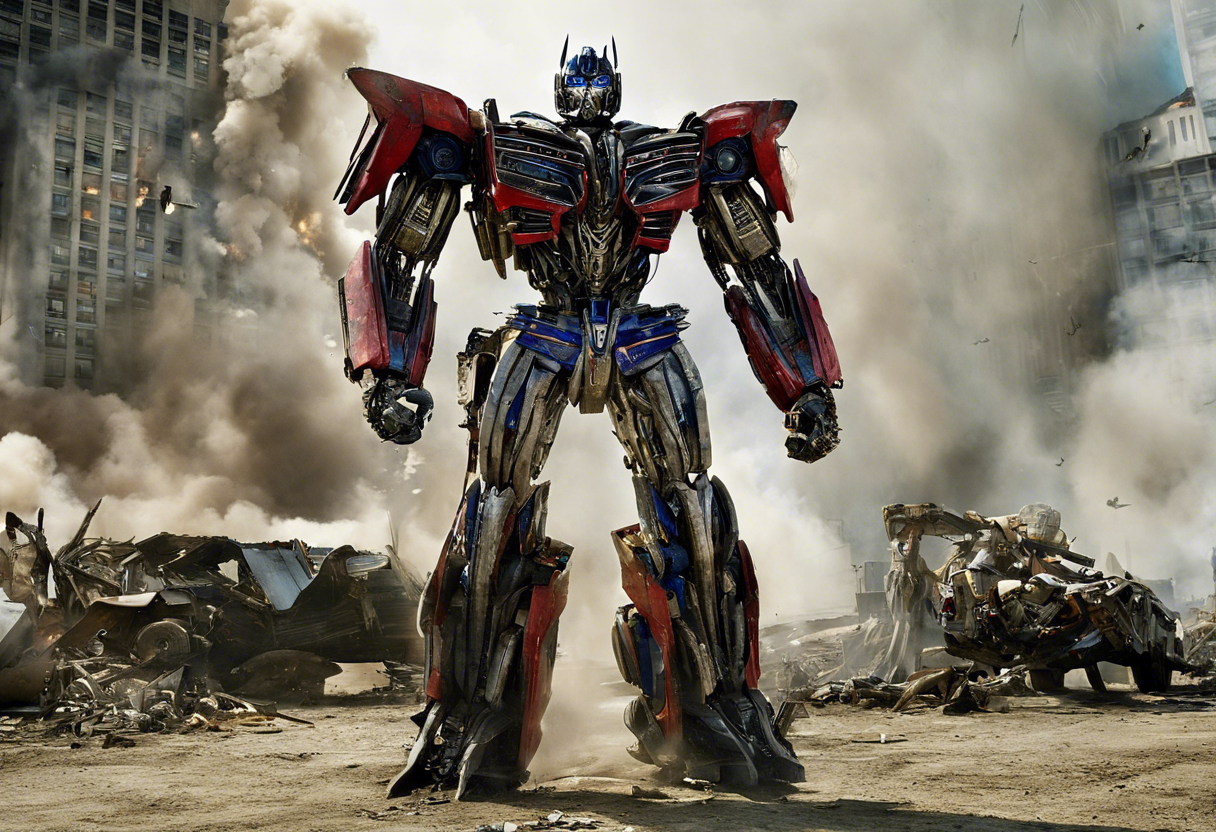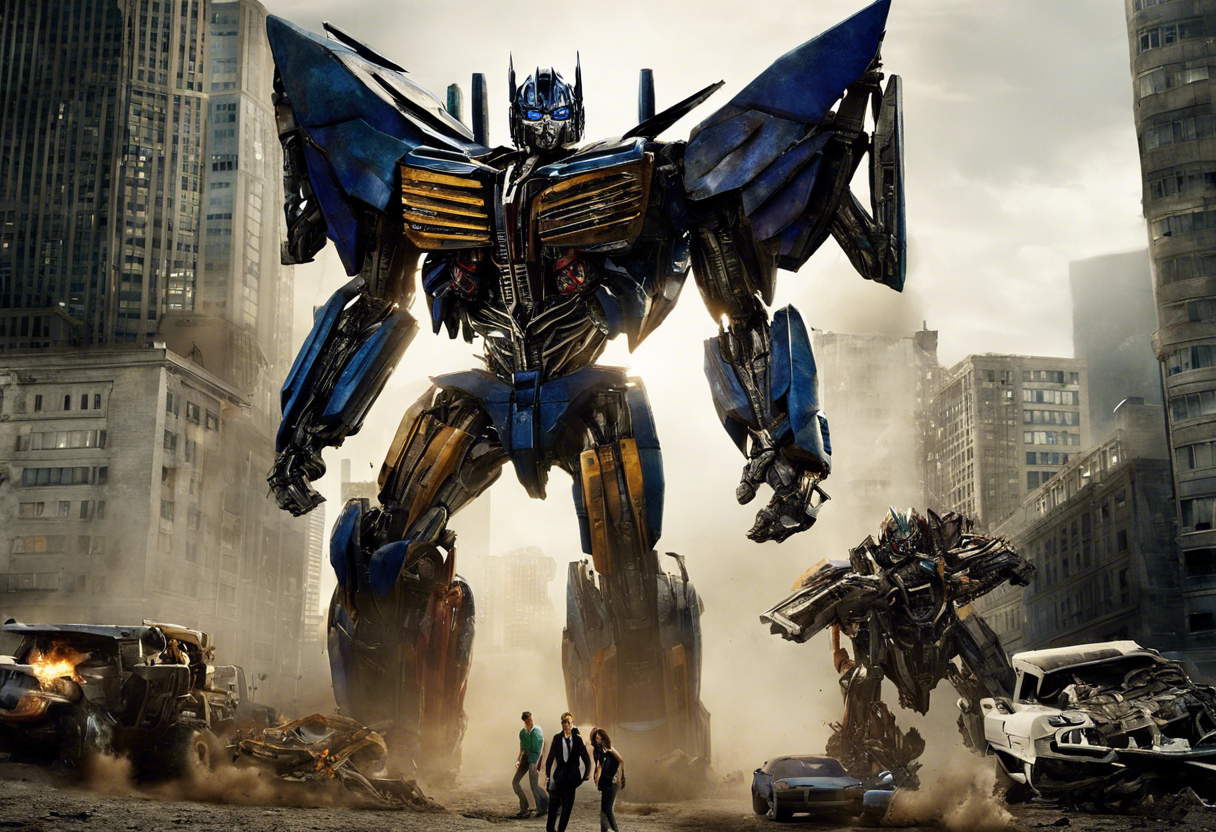Contents
Introduction
Transformers: Dark of the Moon is the third installment in the live-action Transformers film series, directed by Michael Bay and produced by Don Murphy, Tom DeSanto, Lorenzo di Bonaventura, and Ian Bryce. The screenplay was written by Ehren Kruger, who also penned the previous film, Transformers: Revenge of the Fallen. Released on June 29, 2011, Dark of the Moon marks a significant point in the Transformers franchise, both in terms of its narrative and its impact on the genre.
The film is notable for its ambitious scale, complex storyline, and the integration of historical events into its science fiction narrative. Michael Bay’s direction, known for its high-octane action sequences and visual spectacle, sets Dark of the Moon apart within the action and sci-fi genres. The film features a star-studded cast, including Shia LaBeouf, Rosie Huntington-Whiteley, Josh Duhamel, and Tyrese Gibson, among others.
Plot Summary
The story of Transformers: Dark of the Moon begins with a historical twist, revealing that the Apollo 11 mission to the Moon was not just a milestone in human space exploration but also a covert operation to investigate an alien spacecraft, the Ark, which had crash-landed on the Moon’s dark side in 1962 [1][2].
In the present day, the Autobots, led by Optimus Prime, are assisting humanity in various global missions. However, their efforts are disrupted when they discover a fuel cell from the Ark during a mission to the Chernobyl nuclear disaster site. This discovery leads them to the Moon, where they find Sentinel Prime, the original leader of the Autobots, in a comatose state along with five Pillars he created. These Pillars are part of a "Space Bridge," a technology capable of teleporting matter between two points.
Optimus Prime revives Sentinel Prime using the energy of the Matrix of Leadership, but Sentinel soon betrays the Autobots, revealing a deal he made with Megatron to ensure Cybertron’s survival. Sentinel’s betrayal allows the Decepticons to transport hundreds of their troops from the Moon to Earth, leading to a massive invasion of Chicago.
The human characters, including Sam Witwicky and his new girlfriend Carly Spencer, become entangled in the conflict. Sam teams up with former NEST soldier Robert Epps and other allies to rescue Carly, who has been captured by the Decepticons, and to stop the Decepticon invasion. The film culminates in a fierce battle in Chicago, where the Autobots, despite being outnumbered, manage to defeat the Decepticons with the help of human forces.
Key characters such as Dylan Gould, Carly’s boss who is secretly working with the Decepticons, and Megatron, who eventually turns against Sentinel Prime to regain his leadership, play crucial roles in the plot. The film concludes with the Autobots emerging victorious, having saved Earth from the Decepticon threat, and Optimus Prime executing Sentinel Prime for his betrayal [1][2][5].
Themes and Symbolism
Transformers: Dark of the Moon delves into several themes that add depth to its narrative. One of the central themes is the concept of betrayal and loyalty, exemplified through Sentinel Prime’s betrayal of the Autobots and Megatron’s eventual turn against him. This theme highlights the complexities of leadership and the consequences of making deals with enemies to achieve personal goals.
The film also explores the theme of corporate greed and government cover-ups. Dylan Gould’s character, who is revealed to be working with the Decepticons, symbolizes the corrupting influence of power and the willingness of some individuals to sacrifice humanity’s well-being for personal gain. The government’s cover-up of the Ark‘s discovery and the subsequent events on the Moon reflects a broader commentary on the secrecy and mistrust that can exist between governments and their citizens [4].
Additionally, the film touches on the theme of human resilience and cooperation. The alliance between humans and Autobots in the face of overwhelming odds underscores the importance of unity and determination in the face of adversity.
Cultural Impact
Transformers: Dark of the Moon had a significant cultural impact upon its release. The film grossed over $1 billion worldwide, making it one of the highest-grossing films of 2011. Its success was not limited to box office numbers; it also influenced popular culture, with references to the film appearing in various forms of media.
The film’s depiction of urban destruction, particularly the invasion of Chicago, resonated with audiences and critics alike. It was seen as a reflection of contemporary fears about global threats and the vulnerability of major cities to large-scale attacks. The film’s visual effects and action sequences set a new standard for blockbuster films, influencing the direction of future action movies [4].
Critical Reception
The critical reception of Transformers: Dark of the Moon was mixed. While the film was praised for its visual effects, action sequences, and the performances of its cast, it was criticized for its complex and sometimes convoluted plot, as well as its treatment of certain characters.
Many critics noted the film’s dark and cynical tone, which was seen as a departure from the more light-hearted approach of the first two films. This tone, while intentional and reflective of Michael Bay’s satirical vision, was not universally appreciated. The film’s portrayal of violence and destruction was also a point of contention, with some critics feeling that it went too far in its depiction of urban terrorism [4].
Despite these criticisms, the film has developed a cult following over the years, with many fans appreciating its unique blend of action, science fiction, and social commentary.
Legacy
Transformers: Dark of the Moon continues to hold a significant place in cinematic history and the Transformers franchise. It marked a turning point in the series, setting the stage for future films and influencing the direction of sci-fi and action movies.
The film’s use of historical events and its integration of real-world settings into its narrative have been particularly influential. It has also inspired numerous adaptations and references in other media, including video games, comics, and other films.
In terms of its enduring relevance, Transformers: Dark of the Moon remains a fascinating example of how blockbuster films can combine spectacle with social commentary. Its exploration of themes such as betrayal, loyalty, and human resilience continues to resonate with audiences, making it a film that is both entertaining and thought-provoking.
References
- https://en.wikipedia.org/wiki/Transformers:_Dark_of_the_Moon
- https://news.tfw2005.com/2011/05/26/dark-of-the-moon-novel-summary-172277
- https://www.tfw2005.com/boards/threads/meaning-behind-dark-of-the-moon.347360/
- https://collider.com/transformers-dark-of-the-moon-social-satire/
- https://www.tfw2005.com/boards/threads/transformers-dark-of-the-moon-information-control.373358/

